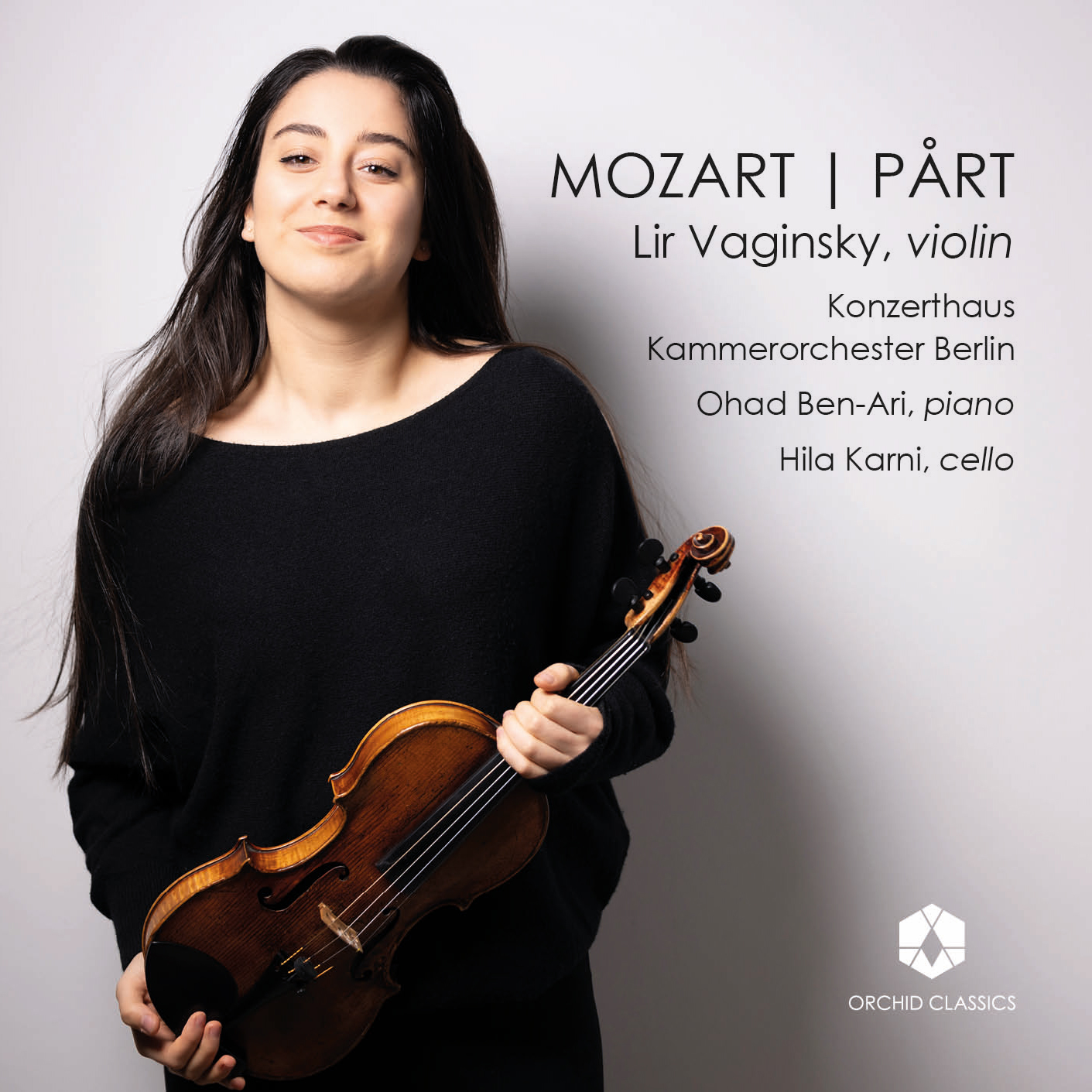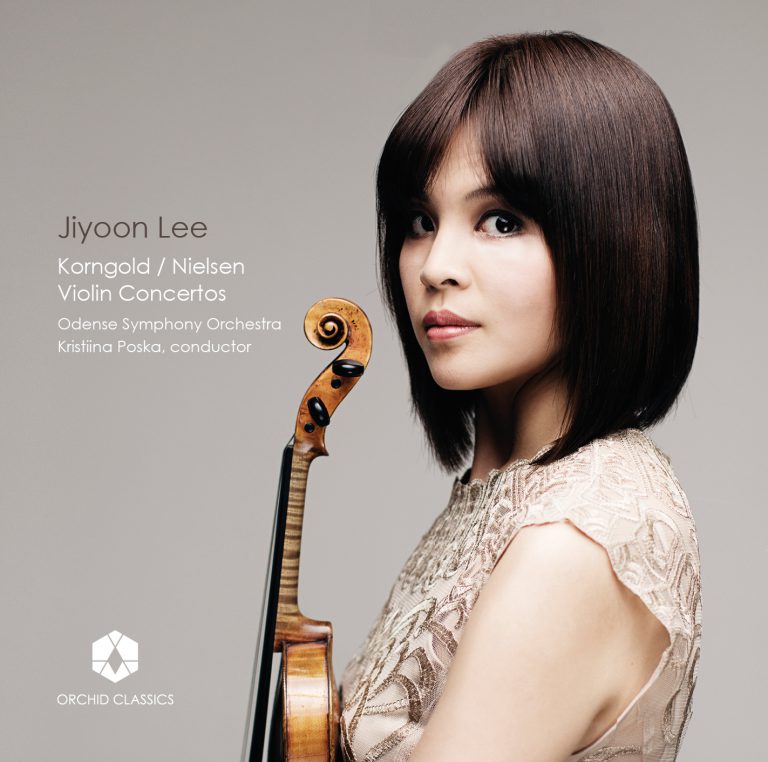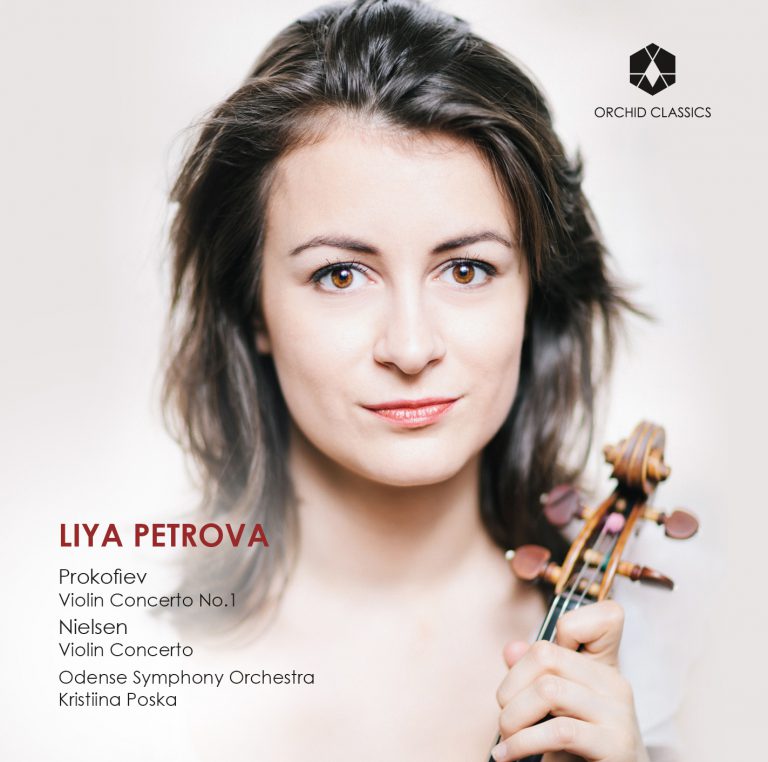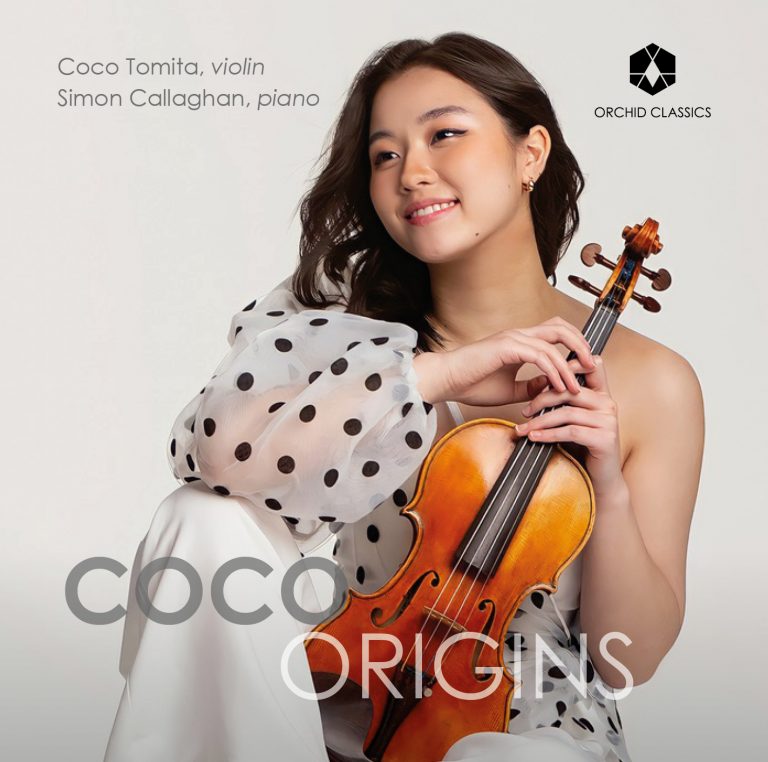Artist Led, Creatively Driven

MOZART & PÄRT
Lir Vaginsky, violin
Ohad Ben-Ari, piano
Hila Karni, cello
Konzerthaus Kammerorchester Berlin
Release Date: Sept 27th
ORC100325
Wolfgang Amadeus Mozart (1756-1791)
Violin Concerto No.1 in B-flat major, K.207
1. I Allegro moderato
2. II Adagio
3. III Presto
Cadenzas by Lir Vaginsky
4. Rondo in B flat major
Cadenza by Lir Vaginsky
Violin Concerto No.2 in D major, K.211
5. I Allegro
6. II Andante cantabile
7. III Rondeau – Andante grazioso – Allegro ma no troppo
Cadenzas by Lir Vaginsky
Arvo Pärt (b.1935)
8. Piano Trio “Mozart-Adagio”
Lir Vaginsky, violin
Ohad Ben-Ari, piano
Hila Karni, cello
Konzerthaus Kammerorchester Berlin
The Mozart concertos have always been very dear to my heart since my early stages as a violinist. I remember coming to my first lesson on the Mozart concerto no.1 with my teacher at the time Christian Tetzlaff asking “so which cadenza should I play?” He looked at me and said “you should write your own of course!” It was the first time I ever composed anything which later became a great project to continue with the other concertos. The first two concertos in B flat major and D major were composed when Mozart was just 19 years old which is the age I recorded this album. It has been such a joy for me to bring this project to life.
Lir Vaginsky
1772 was an important year in the life of the young Wolfgang Amadeus Mozart. In August, he was formally employed by the Salzburg court, which had just gained a new ruler in Archbishop Hieronymous Colloredo, an unpopular and controversial figure. Mozart also made his last tour as a child prodigy in 1772: he was now sixteen years old, and the time had come to make a living as a court employee.
What was a young, newly hired court musician like Mozart required to write? Church music, including church sonatas, were a major part of the role; but he also composed operas, symphonies and string quartets over the next few years. And between 1773 and 1775, he also composed five violin concertos – his only such works in this genre – which provide the principal works in this, Lir Vaginsky’s debut album.
The Concerto in B flat major K.207, Mozart’s first violin concerto, is also considered to be the first original concerto of any kind that he composed. Although there had been earlier pieces for keyboard and orchestra, these had been based on sonatas by Mozart’s contemporaries and older colleagues that he expanded to suit a larger-scale presentation. The violin concertos thus belong to the very beginning of his career as a concerto composer. There is some debate regarding the year in which the B flat Violin Concerto was actually written, and whilst it seems likely that it was completed in 1773, later sources suggest that it belongs instead to 1775, the year of the other four works in this genre.
These concertos are lightly scored – only oboes and horns join the strings – and Mozart’s approach is derived from the Italian style, as well influences closer to home like C.P.E. Bach. It is a matter of musical as well as dramatic significance that the airy opening of the B flat Concerto gives way to darker, minor-key material, and a number of commentators have pointed to similarities between the young composer’s early concertos and the rhetorical and narrative colours of his serious operas. The sparkling cadenza in this first movement is by Lir Vaginsky, who devised all the cadenzas for this disc: just as performers of Mozart’s own generation would have improvised their own spotlit solos in the 1770s, she has taken on this role over 250 years later. The Concerto’s central Adagio is an aria in all but name, although the swoops and dives of the line are far more suitable for a violin than an opera singer! The closing Presto bustles along with a delightful sense of youthful glee.
Mozart’s other violin concertos all end with a rondo, in which the opening melody returns repeatedly throughout the movement. In this respect, the B flat Concerto is unusual, since its finale is in the same form as its opening Allegro. But there is evidence to suggest that it might also have concluded with a rondo finale in its first version. The B flat major Rondo K.269 was most likely originally composed to close the Concerto, which is why Vaginsky has chosen to include it here. It’s in lilting triple time, the horns taking a prominent role in the principal theme; and the movement structure allows Mozart to venture into a variety of different keys and mood (including a rather piquant minor-key episode) before returning, after each excursion, to the cheery rondo subject.
It is possible that the restructuring of the B flat Concerto was connected with Mozart’s colleague at the Salzburg court, the violinist Antonio Brunetti. Brunetti took over as the concert master and music director in Salzburg in spring 1776 and the following year he also replaced Mozart as the leader of the court orchestra. The two men don’t seem to have got on particularly well (Mozart described him as ‘a thoroughly ill-bred fellow’), but they did still have to work together, and the younger composer certainly wrote later pieces with Brunetti in mind. Alternatively, Mozart might have intended these concerti as performance showpieces for himself, as he was a fine violinist in his own right.
The Concerto in D major K.211 dates unequivocally from 1775. There is something wonderfully witty about the poise of this work’s opening – and the hint of a twinkle in the composer’s eye as the music bows gracefully to its audience. Much of the soloist’s writing is accompanied by the upper orchestral strings, which points to Mozart’s knowledge of Baroque concerti by composers such as Antonio Vivaldi: it isn’t an imitation, by any measure, but rather a willingness to explore and experiment with textures borrowed from notable predecessors. The melting Andante once again provides the soloist with an extended opportunity to sing over, and with, the rest of the ensemble. And the closing Rondo cuts a dash as its chirpy theme – introduced at the top of the movement by the solo violin – is put through its paces by the full ensemble.
The final piece on this disc takes us from the 1770s to the 1990s – but Mozart remains the crucial figure here. The Estonian composer Arvo Pärt composed Mozart-Adagio for piano trio in 1992 as an ‘In memoriam’ for the Russian violinist Oleg Kagan (1946-1990). Kagan was particularly noted for his interpretations of Mozart violin works, and recorded all of the Mozart concertos in the 1970s with David Oistrakh conducting. Pärt recalled, ‘I considered him to be one of the best Mozart interpreters on violin. So, I decided to send him a final greeting with a composition permeated by the sound of his beloved Mozart.’ His chamber work is a rendering of the slow movement of Mozart’s early Piano Sonata in F major K280/189e for three players; and although he omits none of the original piece, he adds subtle gestures of ‘commentary’ throughout, as well as providing sparse insertions at the beginning, middle and close of the original Adagio. The result is both exquisite and haunting, a glimpse back down the telescope of history to the far-distant figure of Mozart, aged twenty, and one of his very first piano sonatas.
© Katy Hamilton
Lir Vaginsky
Violin
Israeli violinist Lir Vaginsky started to play the violin at the age of 7. Lir has since performed in concert halls worldwide and is a regular guest soloist of renowned festivals and orchestras. Highlights of past seasons feature performances in the Laeiszhalle Hamburg, Elbphilharmonie, and Berliner Philharmonie with orchestras such as Hamburg Camerata, Unter den Linden Chamber Orchestra, Sinfonie Orchester Berlin among others. Recently, she performed alongside composer Max Richter at the Konzerthaus Berlin and Philharmonie Berlin.
In 2023 Lir recorded her debut album solo with the Konzerthaus Berlin Kammerorchester featuring the Mozart violin concertos with her own cadenzas which will be released soon.
Vaginsky was furthermore a member of the LGT Young Soloists, a string ensemble of exceptionally fine young musicians. Together with this ensemble, she appeared as a soloist at the Tonhalle in Zürich and played at festivals such as Rheingau, Merano and Dresden Music Festival. As a member of the LGT Young Soloists, Lir was the youngest violinist in history to record as a soloist two CDs under the label RCA Red Seal (Sony Music).
Lir started her musical education with her first violin teacher Lena Mazor at the Conservatory Givatayim in Israel. In 2012, Lir studied for five years with Prof. Tomasz Tomaszewski and afterwards with Professor Latica Honda-Rosenberg at the University of the Arts in Berlin. In 2020, she was a Student of Christian Tetzlaff at the Kronberg Academy. Lir Vaginsky was invited to attend and play at masterclasses of Ana Chumachenco, Andràs Schiff, Miriam Fried, Haim Taub, Marc Bouchkov, Augustin Hadelich and David Geringas. She has participated in the Gstaad Menuhin Festival String Academy as well as the Hope Academy led by Daniel Hope.
Lir Vaginsky is a laureate of the Ysaye, Young Paganini and the Grand Prize Virtuoso International Music Competition. In addition, she was awarded first prize and special prizes at the German national “Jugend musiziert” competition. Since 2018 Lir has been a scholar of the German foundation Musikleben and between 2019-2021 a scholar of the Ponto Foundation. Thanks to the support of the Kalliope Foundation, she performs on a 1810 Louis Pajeot bow.
Ohad Ben-Ari
Piano
Born in Israel, Ohad Ben-Ari’s career took surprising turns, leading to diverse artistic collaborations, from production work with Kanye West to solo performances under Sir Simon Rattle. His career began with performances as a soloist with the Israel Philharmonic Orchestra at age 12. He studied piano, composition and orchestral conducting in Tel-Aviv, Frankfurt and Los Angeles, winning top prizes at international competitions such as the ARD and Arthur Rubinstein Competitions. In 1996, he moved to the USA, working as a music producer specializing in pop and urban music. He collaborated with top American artists and produced a diverse range of music, from classical to jazz and pop.
Since 2010, Ohad has lived in Berlin, where he founded and directs the “ID Festival” Berlin, supported by the German Government, serving as a platform for Israeli artists in Germany. Ben-Ari’s compositions and arrangements are performed worldwide. His composition “Violins of Hope,” created in commemoration of the 70th anniversary of the liberation of Auschwitz, was commissioned and performed by the Berliner Philharmoniker in 2015. His latest work, the song cycle “Paterson,” written for mezzo-soprano Magdalena Kožená, will see its premiere in 2025.
Hila Karni
Cello
Hila Karni, an internationally acclaimed cellist, began her musical journey at a young age and quickly rose to fame with her impressive career and concert tours across Europe, Canada, and the United States. Her studies led her to world-renowned teachers such as David Geringas and Bernhard Greenhouse, who described Hila Karni as “one of the most musically sensitive and technically exciting cellists of her generation”. She gained valuable insights into chamber music through Haim Taub and the Alban Berg Quartet. Hila Karni founded the successful Trio Mondrian, winning numerous awards and accolades. She has performed at prestigious festivals and venues such as the Amsterdam Concertgebouw, the Megaron Concert Hall in Athens, the Festspielhaus Baden-Baden, the Palais des Beaux-Arts in Brussels and the Vienna Konzerthaus, the Cologne Philharmonie, the Wigmore Hall in London and Carnegie Hall in New York.
She has collaborated with esteemed artists and receiving critical acclaim for her recordings at Deutsche Gramophone, Challenge, Audite and Odradek labels. Hila Karni is also dedicated to teaching and supporting young talents through her chamber music series “Prelude Concerts” which she founded especially for her daughter Lir Vaginsky. Since 2020, she has been a member of the string trio- Trio Lirico.
Konzerthaus-Kammerorchester Berlin
Since its founding, the Konzerthaus-Kammerorchester Berlin excels by a vast stylistic diversity and an emotional style of playing.
Under the leadership of 1st concertmaster Sayako Kusaka, the Konzerthaus- Kammerorchester, made up of members of the Konzerthausorchester Berlin, opened up an extensive spectrum of compositions from the baroque to contemporary music. The intensive cooperation with an array of renowned artists like Mischa Maisky, Vikingur Olafsson, Sebastian Knauer and Daniel Hope among others, is always an important impulse for the musical development of the Konzerthaus- Kammerorchester.
Their CD “Recomposed by Max Richter: Vivaldi – The Four Seasons” with Daniel Hope, received the Echo Klassik award in 2013, right after its release for the Deutsche Grammophon. The impressive musical versatility of the ensemble is reflected in numerous further CD recordings for the label b-sharp Berlin.
The Konzerthaus-Kammerorchester has its own very successful series of concerts at the Konzerthaus Berlin and it built up a reputation being acclaimed at cultural centers of Europe and on several tours throughout Japan.
Deutsche Stiftung Musikleben
Since 1962 the German Music Foundation has been supporting the elite of young classical musicians nationwide. Under the auspices of the German President the Foundation currently provides approximately 300 scholarship holders between the ages of 12 and 30 with an individually adapted, long-term accompaniment programme. This includes support through an artist sponsorship scheme, live performances and the loan of outstanding instruments through the German Musical Instruments Fund. The Foundation is a non-profit organisation, which solely relies on the gratuity of its friends and patrons. They support the program with annual donations and artists sponsorships, with instrument trustorships and foundations trusts.









